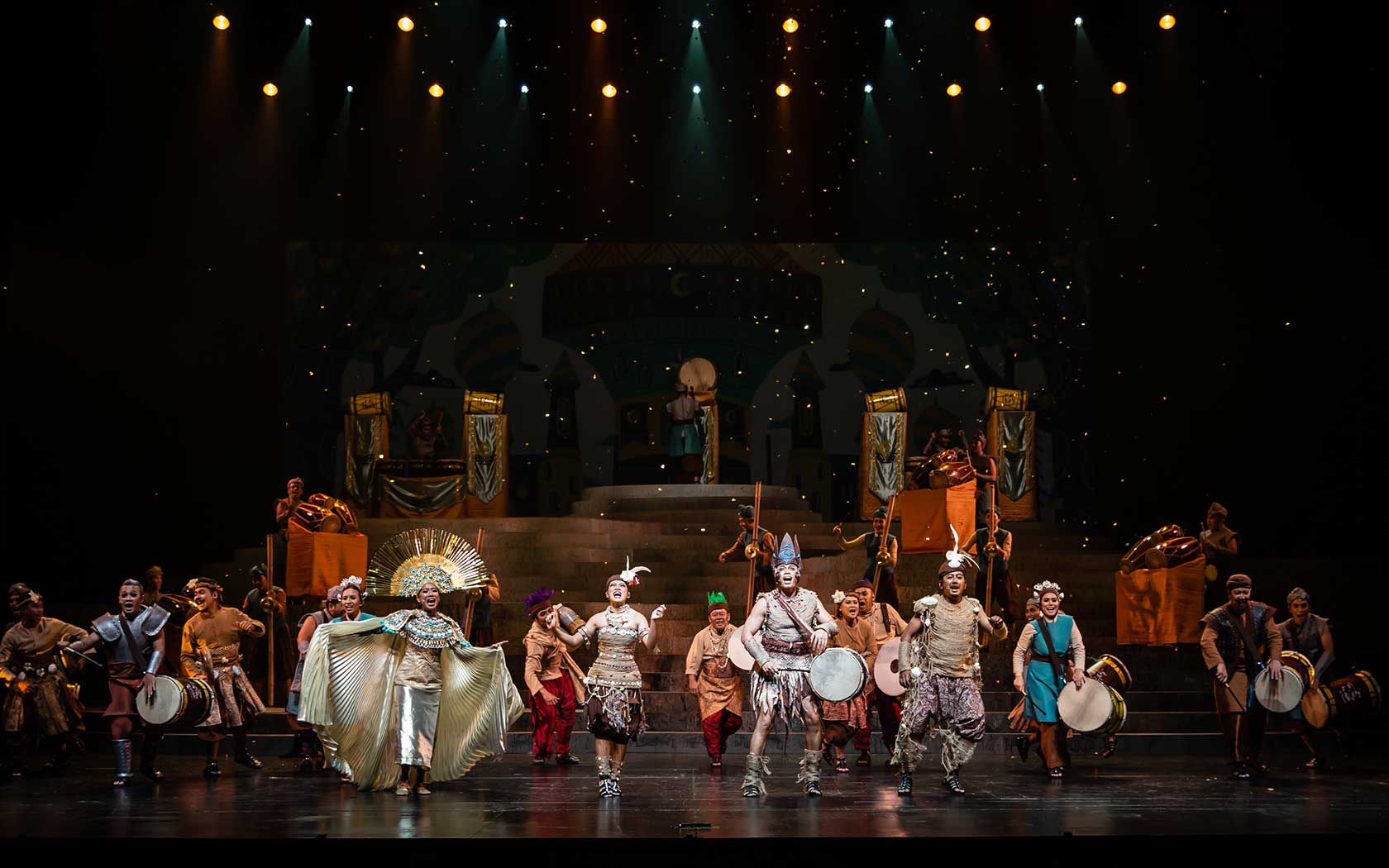The lama (title for teacher in Tibetan Buddhism) wields a damaru—an hour-glass drum; with a twist of the wrist, two strung beads hit the sides of each drum head alternatingly, creating an even, plodding rhythm. In his left hand, a brass bell chimes in time, accentuating each beat with a clear ring that penetrates the mind of the listener.
Developed by the deified female yogi Machig Labdrön in the 11th Century, chöd (means “to cut”) is a Tibetan spiritual practice that aims to sever one’s attachment to the ego. Despite its profound metaphysical intent, the songs used in chöd are some of the most melodious in Tibetan sacred music. In being pleasing to the ears, the music is meant to draw in both living and spiritual beings to attend and benefit from the ritual.
Encounter the restorative experience of chöd through the tantric songs used in two spiritual practices, the Dorje Tholu puja and Terma Lay Jang. Performed by the monks of Sangngag Choekhor Dargyeling Monastery, which is known for its healing ceremonies, the songs used in these practices are well-loved for the beauty of their melodies and their ritual significance.
28 Apr, Fri: Dorje Tholu puja
In a group of six, the monks present songs of the Dorje Tholu puja, one of their daily monastic chants at the Sangngag Choekhor Dargyeling Monastery.
1 May, Mon: Terma Lay Jang
Experience the beautiful and delicate vocal ornamentation and texture of a solo monastic in performance of excerpts of the Terma Lay Jang. The Terma Lay Jang is a collection of teachings that includes healing rituals. It is associated with grander occasions, such as Black Dakini Day (a day dedicated to the Black Dakini or Dark Goddess, a wrathful manifestation of the deity of wisdom who represents the transformation of negative emotions into wisdom).
Chöd: A Tibetan spiritual practice
Through the esoteric rituals, meditation, song and visualisation, practitioners believe that impulse to cling onto the worldly phenomena of samsara (the cycle of death and rebirth) is obliterated. In chöd, gods and demons are not literal beings but the mental emanations—anger, ignorance, desire, and fear—that hinder one’s liberation.
The lyrics are received through revelation—they are a corpus of hidden teachings and texts that manifest themselves to a lineage of masters called tertöns (treasure revealers), at the right time and place for the revelation to take place.
I, a fearless Yogin in spiritual practice
know samsara and nirvana as equal
Dance upon ego-clinging gods and demons
Grinding dualistic samsaric thought to dust
– Laughter of the Dakinis, Chöd text
A chöd ritual can be a daily monastic practice, though more elaborate forms of the ritual can be performed during feast days such as the monthly commemoration of the dakinis—divinity in the female form. Notably, they are sometimes they are performed in cremation grounds, which are ideal locations to summon forth mental states associated with an attachment to the mortal body.











